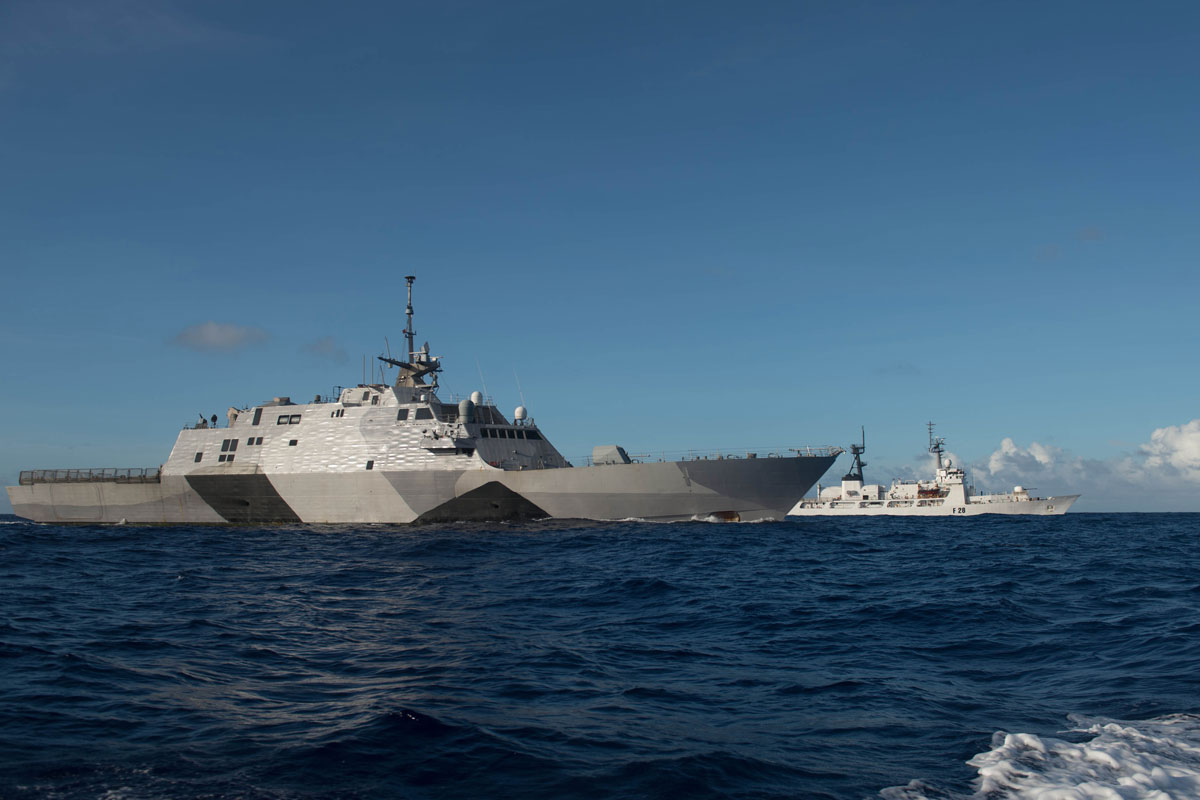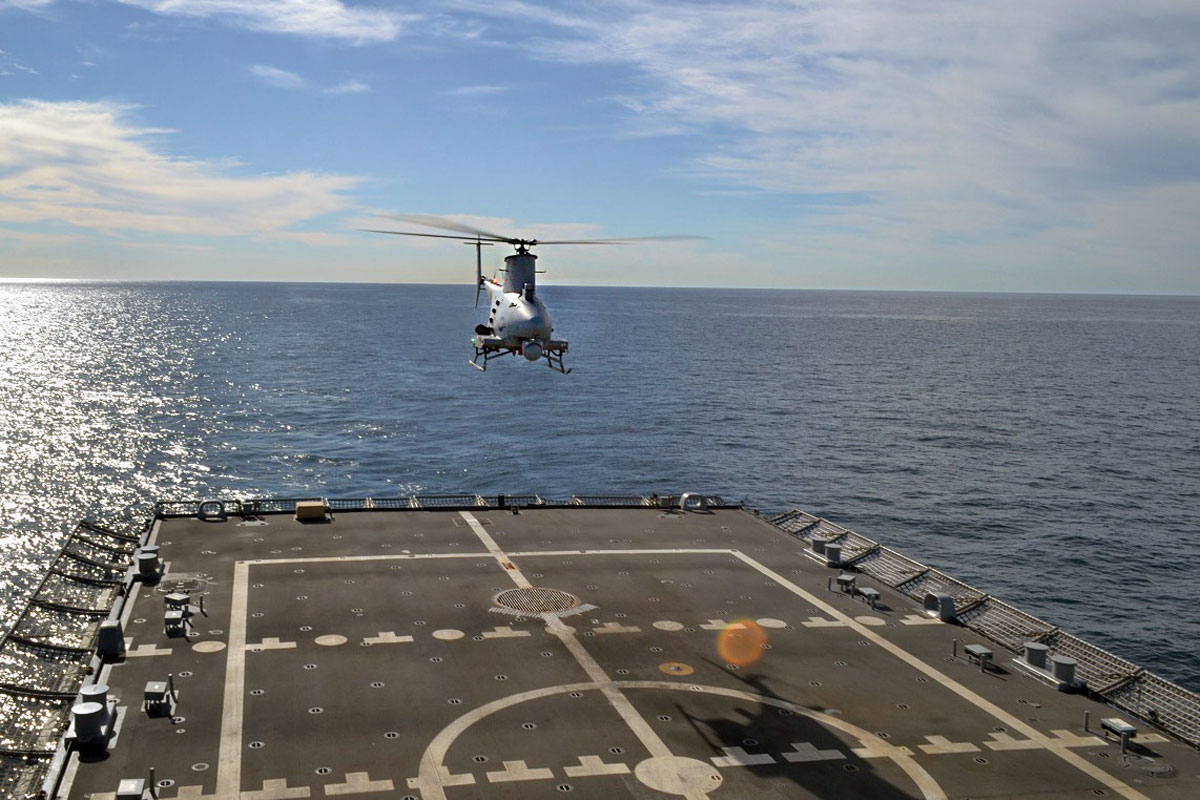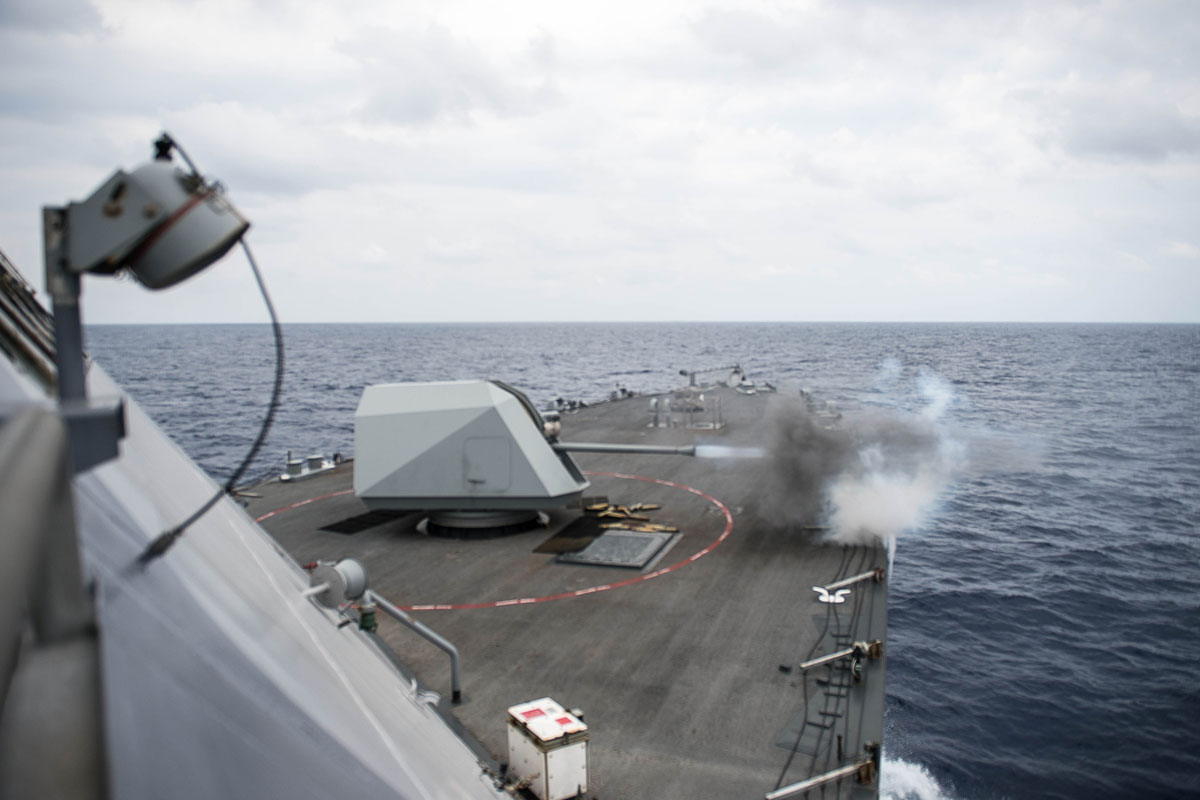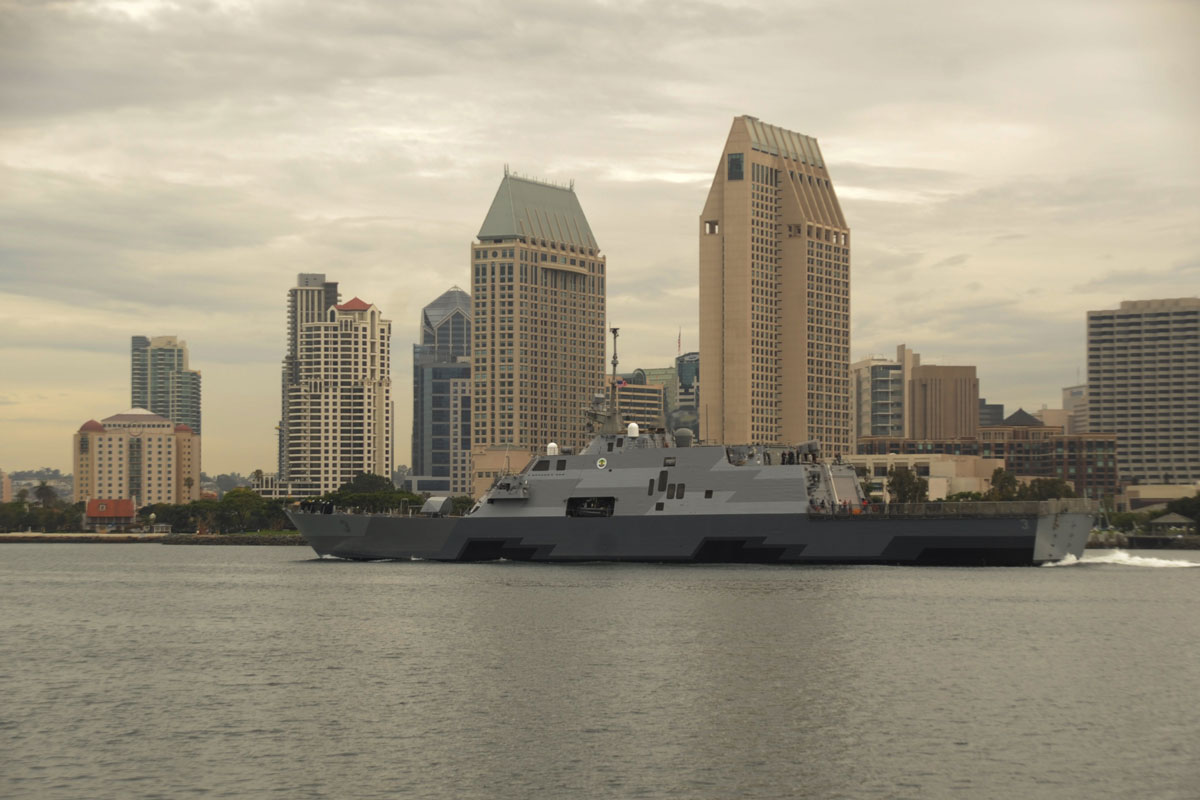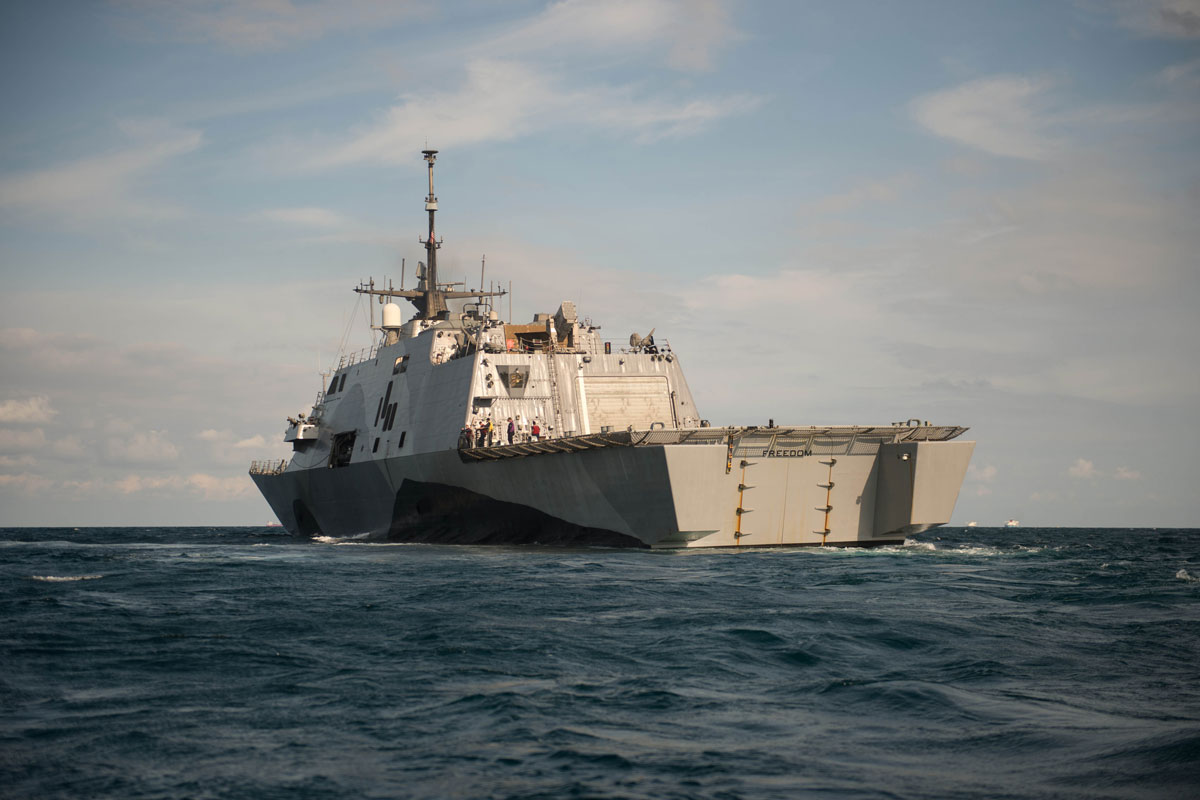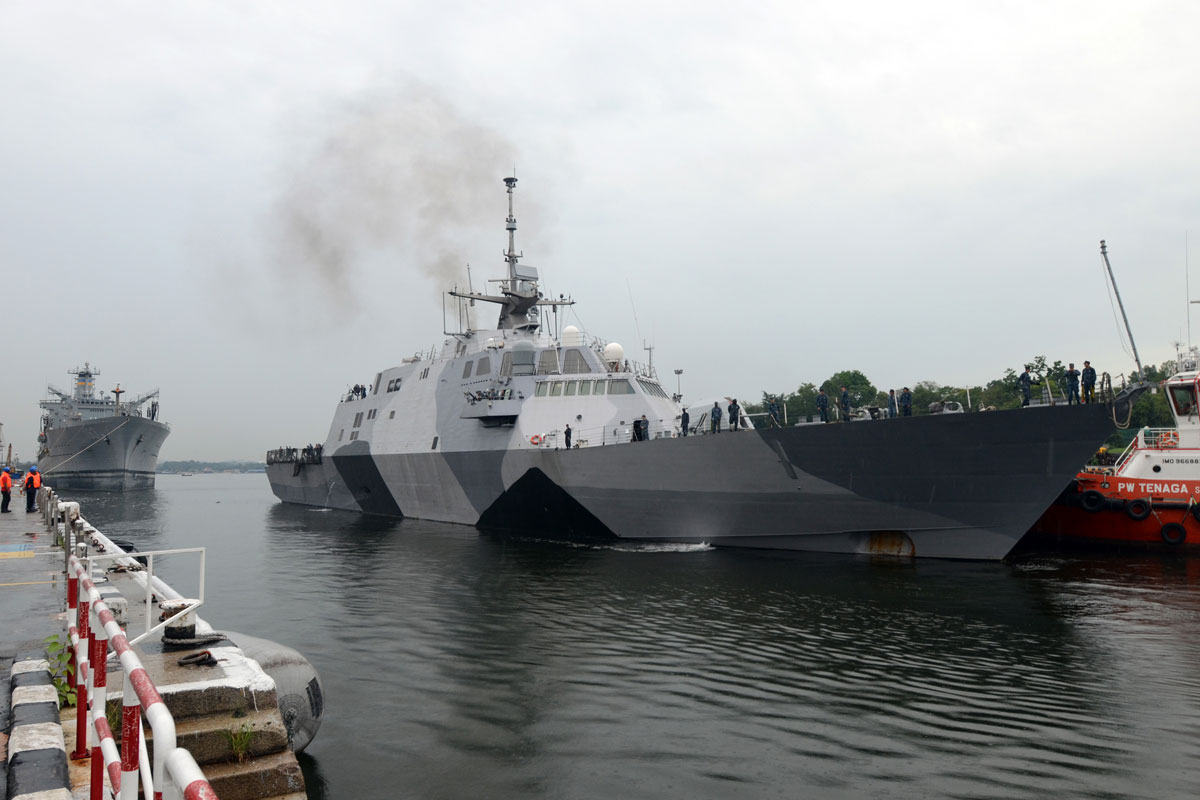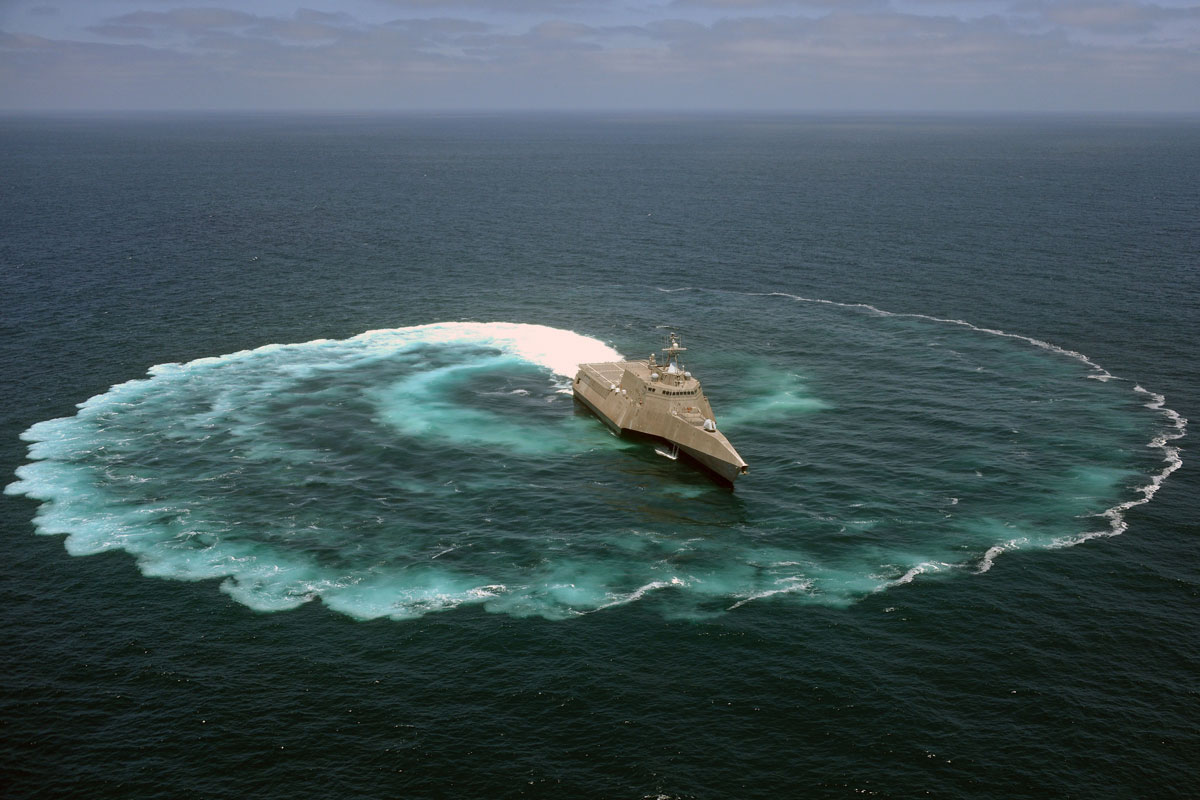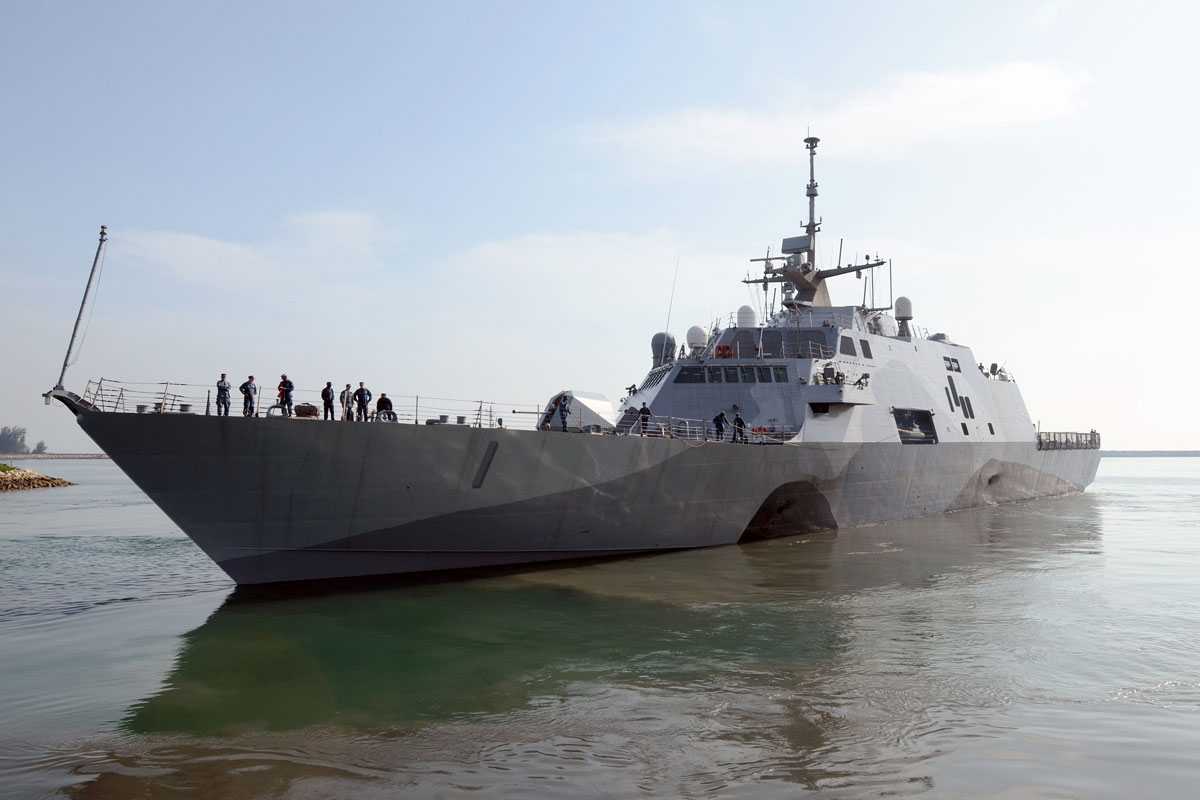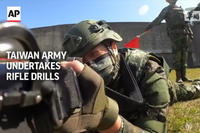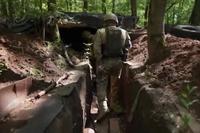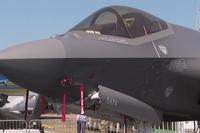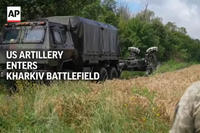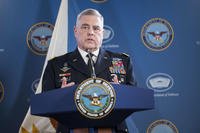Manufacturer: Lockheed Martin, General Dynamics, Austel
Service: USN
Armament: Mk110 57mm gun; RIM-116 Rolling Airframe Missile and SEARAM missiles
Speed: 40+ knots
Crew: 40 officers and enlisted
The Freedom and Independence variant of the Littoral Combat Ship is the U.S. Navy’s newest warship and is a fast, agile, focused-mission platform designed for operation in near-shore environments yet capable of open-ocean operation. It is designed to defeat asymmetric “anti-access” threats such as mines, quiet diesel submarines and fast surface craft.
The LCS class consists of two variants, the Freedom variant and the Independence variant - designed and built by two industry teams. The Freedom variant team is led by Lockheed Martin (for the odd-numbered hulls, e.g. LCS 1). The Independence variant team is being led by General Dynamics, Bath Iron Works (LCS 2 and LCS 4) and Austal USA (for the subsequent even-numbered hulls).
Related Video:
The LCS seaframes will be outfitted with reconfigurable payloads, called mission modules (made up of mission systems and support equipment), which can be changed out quickly. These modules combine with crew detachments and aviation assets to become complete mission packages, which will deploy manned and unmanned vehicles and sensors in support of mine countermeasures, anti-submarine warfare, or surface warfare missions.
Initiated in February 2002, the LCS program represents a significant reduction in time to acquire, design and build ships in comparison to any previous ship class. Constructed by Lockheed Martin in the Marinette Marine Corporation's shipyard in Marinette, Wis., USS Freedom (LCS 1) was delivered to the Navy on Sept. 18, 2008. USS Independence (LCS 2) was constructed by General Dynamics, Bath Iron Works in the Austal USA shipyard in Mobile, Ala. and delivered to the Navy on Dec. 18, 2009. Lockheed Martin was also responsible for the construction and delivery of LCS 3 (USS Fort Worth, which was commissioned in September 2012) and General Dynamics for construction and delivery of LCS 4 (the future USS Coronado, which delivered Sept. 27, 2013).
The Navy's LCS acquisition strategy to down select to a single design in 2010 resulted in a highly effective competition and an industry response that produced significant savings in the LCS program. These competitive bids, coupled with the Navy's desire to increase ship procurement rates to support operational requirements, created an opportunity to award both bidders a fixed-price, ten-ship block buy for a total of 20 ships from fiscal years 2010 to 2015.
Contracts were awarded to Lockheed Martin and Austal USA on Dec. 29, 2010, for the construction of up to ten ships each (FY 2010 - FY 2015), beginning with LCS 5 and LCS 6.
In order to bring operational issues to the forefront, collect data in real-world operational scenarios, and inform the larger LCS fleet integration strategy, the Navy decided to deploy USS Freedom (LCS 1) nearly two years early. On Feb. 16, 2010, the ship deployed to the Fourth Fleet in the U.S. Southern Command area of responsibility. During this deployment, Freedom successfully conducted four drug seizures, netting more than five tons of cocaine, detained nine suspected drug smugglers, and disabled two 'go-fast' drug vessels. USS Freedom also participated in the Rim of the Pacific (RIMPAC) exercise during this early deployment.
On March 1, 2013, USS Freedom departed on the first LCS overseas deployment, crossing the Pacific to operate in Southeast Asia out of Singapore for eight months. Marking the first of many planned rotational deployments to the Western Pacific for the LCS platform, Freedom is conducting maritime security operations with regional partners and allies. This deployment will allow the Navy to demonstrate Freedom’s operational capabilities as well as evaluate crew rotation and maintenance plans for the entire LCS class.
Following her commissioning in Mobile, Ala. on Jan. 10, 2010, USS Independence continued on to her homeport in San Diego. The Navy commissioned LCS 3 on Sept. 22, 2012 in Galveston, Texas, after which she joined sister ships USS Freedom and USS Independence in homeport San Diego. Both LCS 2 and LCS 3 are conducting Post Delivery Test and Trials, which are scheduled to conclude in 2014. LCS 4 (the future USS Coronado) delivered to the Navy on Sept. 27, 2013 and is planned to commission in San Diego in April, 2014.
Milwaukee (LCS 5), Detroit (LCS 7), Little Rock (LCS 9) and Sioux City (LCS 11) are under contract to Lockheed Martin and are in construction at the Marinette Marine Corp. shipyard, and Jackson (LCS 6), Montgomery (LCS 8), Gabrielle Giffords (LCS 10) and Omaha (LCS 12), are under contract to Austal USA and are in construction at the Austal USA shipyard.
Wichita (LCS 13) and Billings (LCS 15) are under contract with Lockheed Martin and in the pre-production phase at Marinette Marine Corp, while Manchester (LCS 14) and Tulsa (LCS 16) are under contract with Austal USA and in the pre-production phase.
Ships in class:
USS Freedom (LCS 1), San Diego, CA PCU Sioux City (LCS 11) - under construction PCU Wichita (LCS 13) - in pre-production phase PCU Billings (LCS 15) - in pre-production phase USS Fort Worth (LCS 3), San Diego, CA PCU Milwaukee (LCS 5) - under construction PCU Detroit (LCS 7) - under construction PCU Little Rock (LCS 9) - under construction PCU Gabrielle Giffords (LCS 10) - under construction PCU Omaha (LCS 12) - under construction PCU Manchester (LCS 14) - in pre-production phase PCU Tulsa (LCS 16) - in pre-production phase USS Independence (LCS 2), San Diego, CA PCU Coronado (LCS 4), San Diego, CA PCU Jackson (LCS 6) - under construction PCU Montgomery (LCS 8) - under construction

